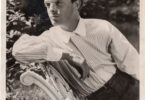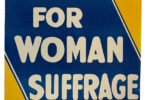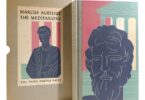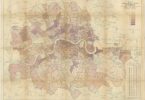The United States is the only country known to have enacted anti-literacy laws. It began with South Carolina’s 1740 Negro Act, passed after the Stono Rebellion in 1739. This act prohibited, among other things, enslaved Africans from learning to write. Other states followed suit in the 1800s following the publication of David Walker’s Appeal to the Colored Citizens of the World, which openly advocated rebellion. Walker was an African American abolitionist and wrote his incendiary appeal in Four Articles; Together with a Preamble, to the Coloured Citizens of the World (1829) to encourage readers to take an active role in fighting oppression. Walker died on August 6, 1830, at the age of 33. His cause of death was listed as tuberculosis, but his life was threatened repeatedly and many believed he was poisoned. He was buried in an unmarked grave, and shortly after his death his wife and children lost possession of their home.
In response to Walker’s appeal and the Denmark Vesey conspiracy unearthed in Charleston, South Carolina passed the Negro Seaman Act, which called for Free Blacks working aboard ships to be jailed while the ship was harbored in South Carolina ports. If the captain refused to comply, the sailors could be sold into slavery. This act prohibited free men from distributing information like Walker’s pamphlet.

Another early author, George Moses Horton, was born on a tobacco plantation in North Carolina outside of Chapel Hill in 1798. He taught himself to read and began selling his poems. Students and teachers at Chapel Hill took notice and his first book of poetry was published with the help of a novelist and professor’s wife, making Horton the first African American to publish a book in the South. Horton wrote poems hoping to purchase his freedom and aptly named his book The Hope of Liberty (1829). It was the first book of literature published in North Carolina. Although he made some money from his poetry, it was not enough to gain his freedom. He continued to write and purchase his time from his master. His second book, The Poetical Works, was published in 1845. His third, Naked Genius (1865), came with his freedom, which was finally granted only at the end of the Civil War.
The first spiritual autobiography by an African American woman is thought to be The Life and Religious Experience of Jarena Lee. Lee herself printed 100 copies in 1836 and distributed them at camp meetings and on the street. In 1839 she had 1000 more printed, and in 1849 she expanded it as she traveled and preached. Lee’s preaching and writing helped influence the Methodist church’s recognition that African Americans, and women of any race, could be preachers.
Maria W. Stewart, born in Connecticut in 1803, was the first African American woman political writer and one of the first female speakers in America at a time when women were banned from speaking in public. Religion and the Pure Principles of Morality, the Sure Foundation on Which We Must Build was published in 1831, and Meditations from the Pen of Mrs. Maria Stewart was published in 1832, both by The Liberator, a weekly abolitionist newspaper printed in Boston by William Lloyd Garrison. Productions of Mrs. Maria W. Stewart presented to the First African Baptist Church and Society of the City of Boston was published in 1835 by Friends of Freedom and Virtue. In 1879, using funds from her widow’s pension, Stewart republished Meditations from the Pen of Mrs. Maria W. Stewart with additional material added from her service at the Freedman’s hospital during the Civil War. She died shortly after.
The earliest short story by an African American, Victor Sejour’s The Mulatto, was published in Paris in 1837.
Ann Plato, a young woman of 16, published her book Essays: Including Biographies and Miscellaneous Pieces in Prose and Poetry in 1841. Not much is known of Ann – her life and death outside of the book she wrote are unrecorded.
Born in Kentucky in 1814, William Wells Brown escaped slavery at 19 and settled in Boston. He became an abolitionist and a prolific writer. In 1847 he published Narrative of William W. Brown, a Fugitive Slave, Written by Himself, which became a bestseller. Clotel; or, The President’s Daughter: A Narrative of Slave Life in the United States by William Wells Brown, was first published in London in 1853 after Brown tried multiple attempts at publication in the United States. It was finally printed in the United States in 1864 as Clotelle: A Tale of Southern States. After the publication of Clotel, Brown wrote several histories, including The Black Man: His Antecedents, His Genius, and His Achievements (1863), The Negro in the American Rebellion (1867), The Rising Son (1873), and the memoir My Southern Home (1880). He also published the first play written by an African-American: The Escape; or, A Leap for Freedom. The play was published in 1858, although not produced until 1971 at Emerson College.
In 1856, Well’s daughter Josephine Brown published Biography of an American Bondman, a follow-up to Brown’s previous memoir that included his life in England, where he stayed for a few years until his freedom was purchased in 1854. The biography, published in Boston by R.F. Wallcut, was one of the first biographies written by an African-American woman, pre-dated only by Susan Paul’s Memoir of James Jackson, the Attentive and Obedient Scholar (1835).
The first African American novel published in the US is Our Nig: Sketches from the Life of a Free Black by Harriet E. Wilson, a free person of color living in New Hampshire. Our Nig was published anonymously in 1859 and rediscovered by Henry Louis Gates Jr in 1982. Gates discovered another manuscript, The Bondwoman’s Narrative by Hannah Crafts, that may have been written between 1853 and 1860 but was not published until 2002.
Another early African American novel was Julia C. Collins’s The Curse of Caste, or the Slave Bride. This novel was serialized in the Christian Recorder but remained unfinished when she died of consumption at 23.
Martin R. Delany’s Blake: Or the Huts of America was another serialized early novel first published in Anglo-African Magazine in 1859. Part 2 was published in 1862, but Part 3 remains missing, as no surviving copies of the magazine it was published in are known to exist.
The Garies and Their Friends, by Frank J. Webb, was published in London in 1857. The novel included a two-page preface by author Harriet Beecher Stowe and depicted the hardships of a free black community in Philadelphia during the 1820s and 1830s. It was the first novel by an African American author that portrayed free blacks in the North.
Slave Narratives
Stories have the power to move people, so slave narratives became a powerful tool for the abolitionist movement. The real-life tales amplified the plight of African Americans after their voices had been silenced for generations. They showed the humanity of enslaved persons whose fundamental human rights had been stolen away. By highlighting personal progress and religious redemption, and providing a written history of lives and meaning, the first-person narratives built the groundwork for a rich legacy of subverting white supremacy and overturning the romanticization of the Antebellum south.
Slave narratives were the main form of African American literature in the 19th century. Between 1700 and 1950, there were 204 book-length slave narratives published in the United States. Thousands of other narratives were collected and printed as well, including magazine and newspaper stories, broadsides, court records, and oral histories. The notion that literacy made people unfit for slavery, emphasized by the law, drove many to learn to read and write as the first step in their quest for freedom, the key to unlocking their chains.
These slave narratives testified against enslavers while giving the enslaved hope and a road map toward freedom. The earliest slave narrative to receive international attention was the two-volume Interesting Narrative of the Life of Olaudah Equiano, or Gustavus Vassa, the African (1789).
A Narrative of the Life and Adventures of Venture, a Native of Africa: But Resident above Sixty Years in the United States of America, Related by Himself, was a first-hand account of an African kidnapped into slavery and had to forge a life in the new world. Published in 1798, the story of Venture Smith was related by him to a local school teacher, as Venture was not literate himself.
The first fugitive slave narrative in the United States was published in 1825, The Life of William Grimes, the Runaway Slave, Written by Himself.

One of the bestselling slave narratives was by Frederick Douglass. Born into slavery in Maryland in 1818, Douglass escaped and became a prominent American social reformer, abolitionist, orator, writer, and statesman. He lived by the rule “Knowledge makes a man unfit to be a slave,” and in 1845, he released his famous autobiography Narrative of the Life of Frederick Douglass, an American Slave, Written by Himself. He also wrote My Bondage and My Freedom (1855) and Life and Times of Frederick Douglass (1881) and was the most photographed man of the 19th century.
Another significant slave narrative is The Narrative of Sojourner Truth: a Northern Slave (1850). Truth, born in 1797, started dictating her memoirs to her friend Olive Gilbert, and in 1850 William Lloyd Garrison published her book. Garrison co-founded a weekly anti-slavery newspaper, The Liberator, and was a publisher who fully believed in the power of the press to bring about change.
Harriet Jacobs was the first woman to write her own slave narrative when she released Incidents in the Life of a Slave Girl in 1861.
Seen as a novelty or useful propaganda, many of these texts were not preserved in personal libraries, and while reprints of some are plentiful, many early editions are exceedingly rare.
Amy C. Manikowski is a writer living in Asheville, NC.







Thank you for sharing this.